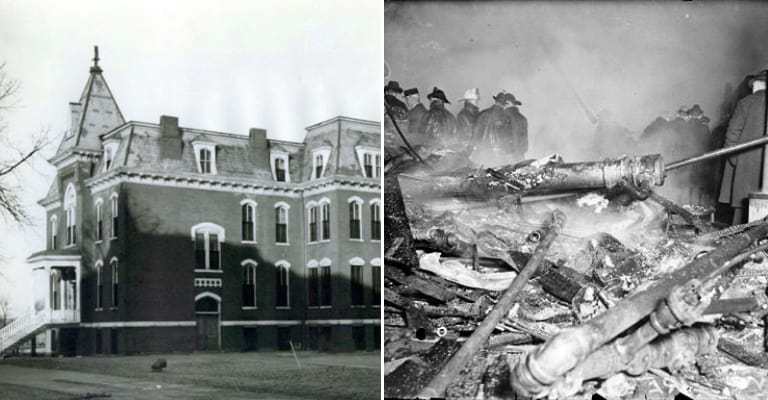The idea of being unable to escape a fire is harrowing, to be unable to escape because of being locked up more so. All public buildings are required to have the means of rapid exit in the case of emergency. Some buildings though are designed to prevent any exit at all, and in these the risk of dying in a fire is increased. Even so-called fire proof buildings contain risks from fire which can occur in other flammable materials inside the building, from furnishings, furniture, and other items. Fires deliberately set by individuals can be disastrous for others, whether harm was intended or not.
Most victims of fire die from asphyxiation or the inhalation of toxic smoke, rather than the direct effects of the flames. Often panic makes its contribution to the list of casualties, an indication of the horror and desperation experienced by the victims in their final moments. There have been dozens of fires in prisons which led to multiple casualties, in the United States and elsewhere, and unfortunately, facilities housing those deemed too mentally disturbed to reside in a manner where they could potentially harm themselves or others.
Here are ten examples of fires in which many people died because they were unable to flee due to being incarcerated or restrained.
Maury County Jail Fire, Maury County, Tennessee 1977.
The small, one story Maury County Jail was designed to hold about 40 inmates, but like many jails across the United States was cursed with overcrowding in June of 1977. On the afternoon of June 26, a Sunday, there were 56 inmates incarcerated in the jail, with 40 visitors, who were allowed to visit in the cells, locked in with the inmates, or in the common area in the back corner of the jail. Among the inmates was a 16 year old runaway from a Wisconsin facility for emotionally disturbed juveniles named Andy Zinmer.
Zinmer had been picked up by deputies while walking along an Interstate Highway the preceding morning and after causing an incident in the separate juvenile facility was transferred to a padded cell in the main jail. As a visitor for another inmate passed his cell, Zinmer requested and was given a lighted cigarette. It was later determined that Zinmer was a non-smoker. He used the cigarette to ignite the padding of the cell. The flames spread quickly, igniting Zinmer’s clothing, and he began screaming that he was on fire.
One deputy dragged Zinmer from his cell while another began searching for the keys to the remaining cells, hampered by the rapid build-up of smoke and cyanide gas from the burning padding. A deputy with keys in hand tried to enter the cell block when he collided with a rush of panicked people heading for the main doors, dropping the keys. He searched on his hands and knees while others raced past him, and after “two or three minutes” located them on the floor. By then it was impossible to approach the cell block.
Attempts were made to use a bulldozer and other nearby heavy equipment to break the reinforced concrete walls from the outside to create escape holes, with some success. When firefighters wearing masks reached the cells they were able to rescue several of the trapped inmates and visitors, many of whom were already overcome from the toxic gases. A tow truck was used to pull the bars from windows, often straining to the point that the truck’s wheels came off the ground.
In all seventy-five of the people in the jail when the fire broke out were taken by rescuers to the Maury County Hospital, forty-two of them dead, with another thirty-three injured. Of the dead, 34 were inmates of the jail, eight were visitors. Most of the dead were piled one upon the other in the back of the common area. Several of the injured were transferred to burn units in Nashville hospitals, Zinmer among them. It was later learned that he had been in a home for mentally disturbed juveniles for starting and threatening to start fires.

